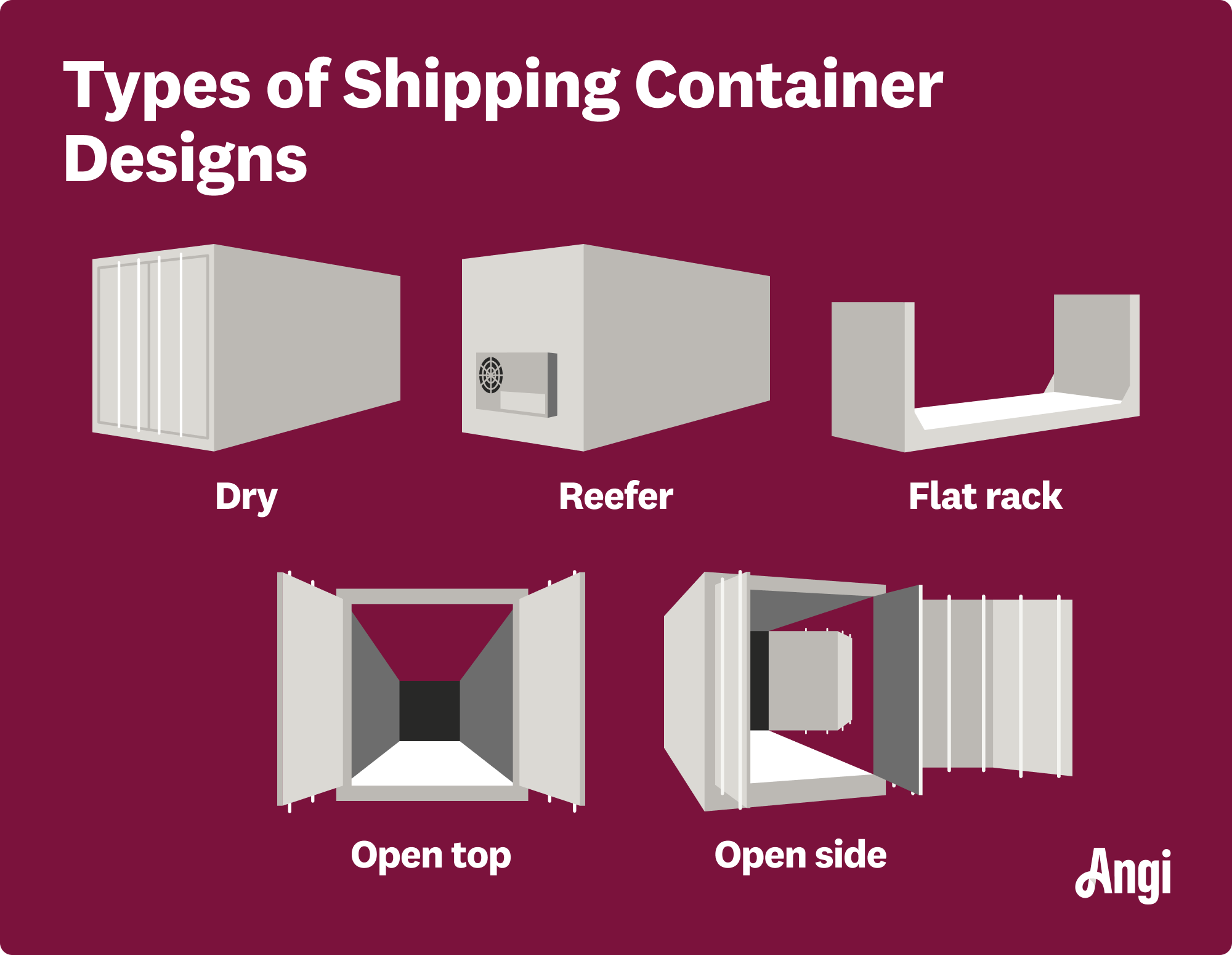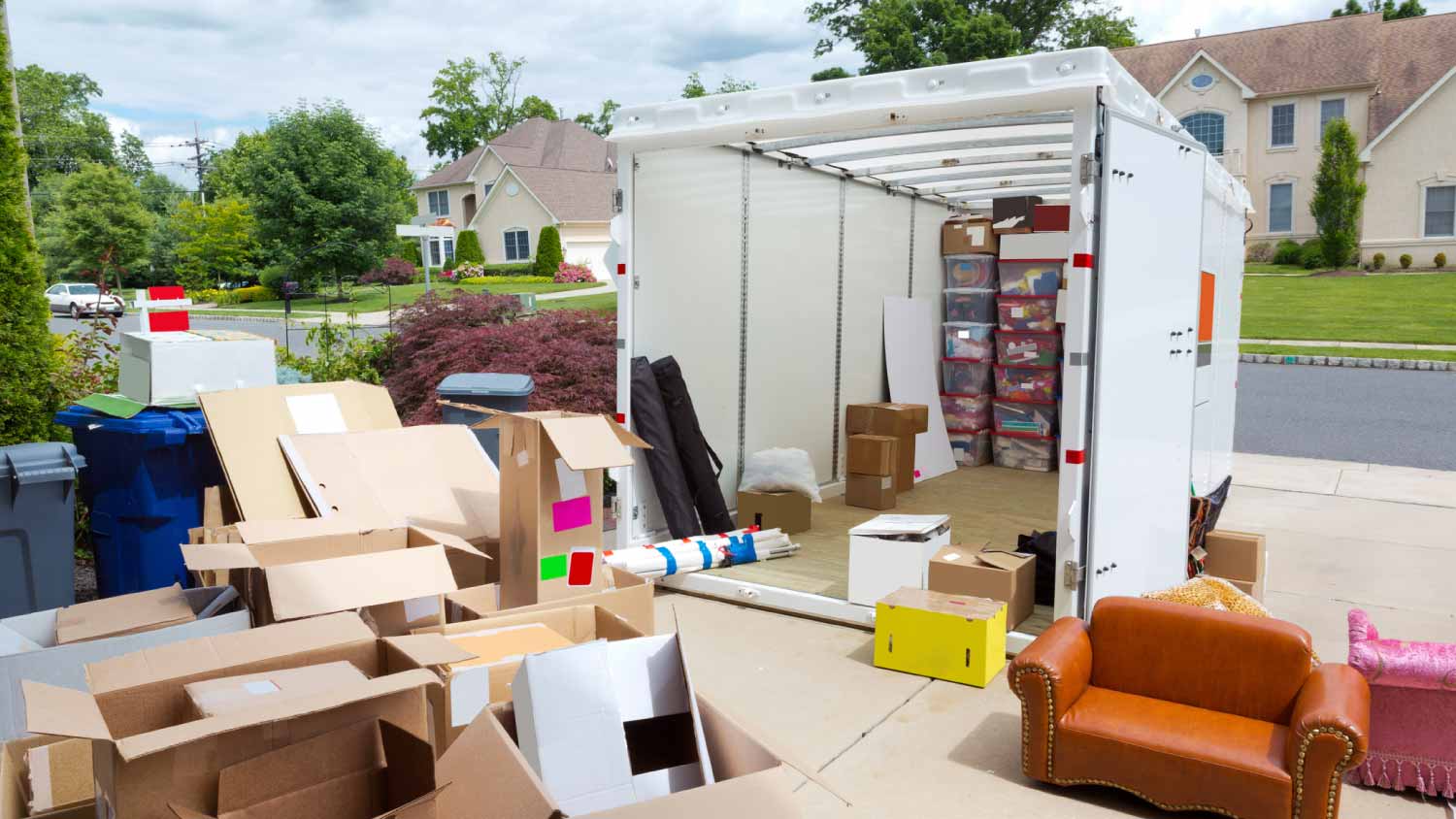
How much do hot tub movers cost? Find out the average prices for professional hot tub movers, whether you’re moving it on your property or to a new home.
Get revved up for your big move


Long-distance moving can be a huge hassle—and if you hire professional movers, it can also be expensive. One way to keep the costs down is to rent a shipping container, pack your belongings yourself, and transport the container to your new home. But how do you go about transporting it? These tips will help you learn how to transport a shipping container safely and effectively.

Before planning the move, check the size and weight of your shipping container. Sizes can depend on the company you’re renting the moving container from, but standard sizes include the following:
7 feet
12 feet
16 feet
20 feet
27 feet
Generally, a 20-foot container is ideal for a three-bedroom house. However, if you live in a small home or apartment, you might get away with a 7-foot or 12-foot shipping container.
The larger the container, the more it will weigh. Many moving container companies have weight limits for transportation, so check to see if that’s the case. The heavier the container, the harder (and more expensive) it will be to move.
Your move distance will also dictate how you will transport the shipping container. A long-distance move could be from one state to another, to the other side of the country, or even overseas. If you’re moving overseas, you might need a larger shipping container of 20 feet or 40 feet. But, moving from California to New York may only require a 16-foot container.
Your move distance will also determine the correct transportation method for moving your shipping container. Long-distance moves usually require a tilt-bed truck, a flatbed truck, or a step-deck truck for your shipping container.
Tilt-bed trucks are ideal for transporting smaller moving containers. Simply tilt the bed and slide the shipping container off the truck at your destination.
Flatbed trucks are best for larger containers or longer-distance moves. Once you arrive, you’ll need a crane or forklift to remove the shipping container from the truck.
Step-deck trucks transport shipping containers taller than 8 feet. You’ll need a crane or forklift to get the shipping container on and off a step-deck truck.
Other transportation options include by train or boat.
Trains are best for long-distance moves to and from areas near rail lines. However, you’ll still need to arrange transportation to get the container to and from the train depot.
Boats transport shipping containers overseas. Not all shipping containers are watertight, so if you plan to move abroad and ship your belongings, you must choose the right type of container.
Each U.S. state has different regulations regarding transporting heavy and bulky items, such as shipping containers. If you’re driving your container, you may need a commercial driver’s license (CDL) to comply with state laws. State departments of transportation also have weight limits for trailers and trucks, so check to ensure your shipping container’s weight is within the allowed limit.

Moving can be pricey, whether you use a shipping container or hire professional movers. Knowing what to expect can help you make a realistic budget for your move. Shipping a moving container costs $2,000 to $5,000, with a national average cost of $3,000 for a domestic move. The bigger your home and the longer your move, the more you’ll pay.
A shipping container for a one-bedroom home costs around $2,000 to move, while a large container for a five-bedroom home costs around $5,000 to move. Shipping a moving container internationally averages $4,150, but don’t be surprised if you have to pay the high-end cost of $9,100 or more.
When shipping your personal belongings, you want to ensure they’re protected. Insurance can help. Moving insurance is worth the cost of around 1% to 2% of the estimated value of your belongings if you need to make a claim. There are three types of coverage you can consider:
Full value protection costs around 1% of the total estimated value of your goods but pays to replace your items at their full value if they’re damaged, destroyed, or lost.
Released value protection is usually offered free of charge by moving companies. However, it only pays $0.60 per pound per item if you need to make a claim, so you could pay out of pocket to replace your belongings.
Third-party policies often cost 1% to 5% of the estimated value of your items, but they often cover belongings other policies won’t, such as heirloom jewelry. They may also cover situations other policies won’t, like natural disasters, mechanical accidents, mold and mildew damage, and insect or pest damage.
Moving a shipping container can be a doable DIY project, but you’ll need to rent trucks, trailers, and heavy equipment—not to mention the risks of personal injury and property damage. For this reason, many homeowners hire a local moving company to transport their moving containers for them. Hiring a pro has several benefits, including experience and familiarity with transportation laws. Check whether the company you rented the container from offers transportation services.
From average costs to expert advice, get all the answers you need to get your job done.

How much do hot tub movers cost? Find out the average prices for professional hot tub movers, whether you’re moving it on your property or to a new home.

This guide breaks down the factors that influence how much it costs to move a bed frame, including frame size, weight, and distance of the move.

Wondering how much it costs to ship a bed and bedroom set? Start by determining the weight of the furniture and the distance of your move.

Need help moving furniture or other in-home heavy lifting? Your best bet is hiring professional movers to do the job for you.

Not sure whether to ask your friends to help with your big move? In this guide, we review the best practices for enlisting friends for moving help.

Packing dishes is often an overlooked part of the moving process. Learn how to pack dishes for moving in a safe and strategic way with this DIY guide.